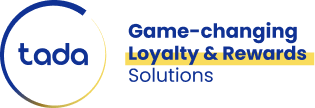
B2B loyalty programs are instrumental in cultivating enduring client relationships that drive sustained business growth and profitability. These programs go beyond transactional interactions, focusing on building trust and loyalty over time.
However, despite their potential benefits, many B2B loyalty programs falter due to common pitfalls that undermine their effectiveness.
#1 Mistake: Lack of Clear Value Proposition
A compelling value proposition lies at the heart of successful B2B loyalty programs. It articulates the unique benefits and incentives that partners can expect in exchange for their loyalty and continued business. Without a clear value proposition, partners may struggle to perceive the program's benefits or differentiate it from competitors' offerings.
Your value proposition not only attracts partners but also aligns their business objectives with the program's goals. It should address partners' pain points, such as increasing profitability, reducing costs, or improving operational efficiency.
By clearly communicating the tangible benefits partners stand to gain, businesses can enhance program engagement and retention rates.
Effective value propositions in B2B loyalty programs often include:
- Guaranteed cost savings through volume discounts or rebates.
- Access to exclusive products, services, or industry insights.
- Dedicated support and personalized service to streamline operations.
Unclear or weak value propositions can lead to:
- Low partner enrollment and participation rates.
- Partners perceiving the program as irrelevant or lacking in value.
- Difficulty in sustaining long-term partner engagement and loyalty.
A strong value proposition sets the foundation for a successful B2B loyalty program, aligning partner expectations with business objectives and fostering mutual growth.
#2 Mistake: Insufficient Communication and Engagement
Effective communication and engagement are crucial elements in maintaining strong partnerships within B2B loyalty programs. Proactive communication fosters transparency, builds trust, and ensures partners feel valued and informed about program benefits and updates.
Regular communication serves as a conduit for conveying program updates, sharing insights, and soliciting feedback from partners.
It strengthens relationships, aligns expectations, and enhances overall program satisfaction. By keeping partners informed about new incentives, market trends, and strategic initiatives, businesses can maintain partner engagement and loyalty over the long term.
Strategies for enhancing engagement include:
- Establishing a consistent communication schedule via emails, newsletters, and personalized updates.
- Utilizing digital platforms and social media channels to facilitate real-time interactions and feedback.
- Hosting virtual or in-person events such as webinars or workshops to foster knowledge sharing and collaboration.
#3 Mistake: Complex or Confusing Program Structure
Complex program structures can hinder partner participation and diminish the effectiveness of B2B loyalty programs. A streamlined and intuitive program structure is essential for optimizing partner engagement and ensuring clarity in program objectives and rewards.
Complex program structures may lead to:
- Confusion among partners regarding eligibility criteria and reward mechanisms.
- Increased administrative burden for partners in tracking and redeeming rewards.
- Frustration and disengagement due to perceived barriers to participation.
Best practices include:
- Clearly defining program objectives, eligibility criteria, and reward tiers.
- Simplifying the redemption process through user-friendly platforms and automated tracking systems.
- Providing clear guidelines and support materials to educate partners on program benefits and requirements.
#4 Mistake Neglecting Personalization and Customization
Personalization and customization are pivotal in fostering strong B2B relationships and maximizing engagement within loyalty programs. Tailoring experiences and rewards to individual partner preferences enhances satisfaction and strengthens loyalty over time.
Personalization demonstrates attentiveness to partners' unique needs and challenges, forging deeper connections and increasing their sense of value. By understanding partners' business objectives and preferences, businesses can deliver relevant rewards and experiences that resonate on a personal level.
Strategies for effective personalization include:
- Segmenting partners based on behavior, preferences, and purchase history to deliver targeted incentives.
- Offering personalized communications and offers that address specific partner pain points and goals.
- Utilizing customer relationship management (CRM) systems and data analytics to capture and leverage partner insights for customized interactions.
Customized rewards and experiences benefit partners by:
- Strengthening loyalty and retention through tailored incentives that align with their business objectives.
- Enhancing satisfaction and engagement by acknowledging partners' contributions and achievements.
- Driving mutual growth and profitability through collaborative, personalized partnerships.
#5 Mistake: Lack of Data Utilization and Analysis
Data analytics plays a pivotal role in optimizing B2B loyalty programs by providing actionable insights that drive strategic decision-making and program improvements. Leveraging data effectively allows businesses to enhance program performance and deliver greater value to partners.
Data analytics enables businesses to:
- Track partner behavior, preferences, and performance metrics to identify trends and opportunities.
- Measure the impact of loyalty initiatives on partner satisfaction, retention, and revenue growth.
- Predict future trends and anticipate partner needs to proactively adjust program strategies.
Examples include:
- Analyzing sales data to identify top-performing partners and tailor rewards programs accordingly, resulting in increased sales and partner satisfaction.
- Using customer feedback and sentiment analysis to refine program communications and enhance partner engagement levels.
Tools and technologies include:
- Customer relationship management (CRM) systems for capturing and analyzing partner data.
- Business intelligence (BI) platforms for visualizing data trends and performance metrics.
- Predictive analytics tools for forecasting partner behavior and optimizing program outcomes.
Wrap up!
Optimizing B2B loyalty programs requires addressing above common pitfalls. By implementing strategies to enhance personalization, leveraging data insights effectively, and continuously refining program structures, businesses can maximize engagement, loyalty, and overall program effectiveness.
Looking for a robust platform to elevate your B2B loyalty program? Tada has the solutions you need. Request a demo now and see how we can help you drive engagement and success.


.png)
